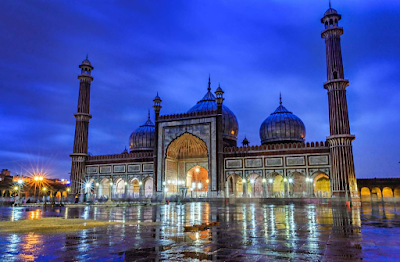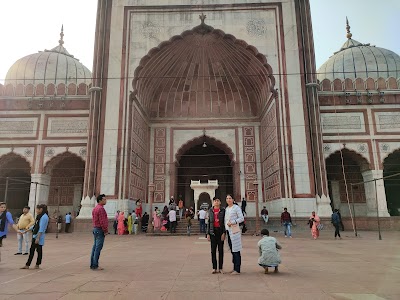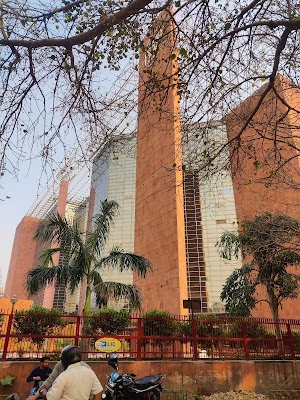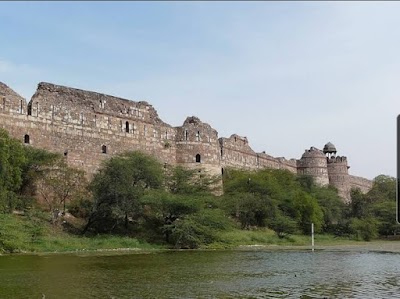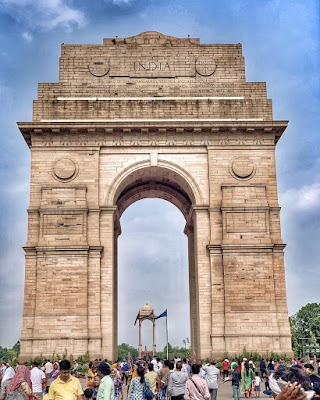Jama Masjid (जामा मस्जिद)
Overview
Situated in the heart of India’s vibrant capital, New Delhi, the Jama Masjid is an architectural marvel and one of the largest mosques in the country. Constructed between 1644 and 1656 by the Mughal Emperor Shah Jahan—who also commissioned the iconic Taj Mahal—this majestic mosque stands as a testament to the grandeur and opulence of Mughal architecture.
The official name of the Jama Masjid is Masjid-i-Jahan-Numa, which translates to the "Mosque Commanding View of the World." True to its name, the mosque offers breathtaking vistas of the bustling city below. Visitors are welcomed by a massive courtyard that can accommodate over 25,000 worshippers, marking it as one of the most significant places of Islamic worship in India.
The construction of the mosque involved more than 5,000 workers and took 12 years to complete. Its distinctive features include three grand gates, four towering minarets, and two impressive 40-meter-high minarets crafted from strips of red sandstone and white marble. The craftsmanship is spectacular, with intricate carvings and designs adorning the walls and domes. The mosque’s terrace is crowned by three large domes, flanked by two lofty minarets that add to its majestic silhouette.
Upon entering through the magnificent gates, tourists are greeted by the vast expanse of the courtyard. A central tank, crucial for performing ablutions before prayers, enhances the serene atmosphere. Surrounded by carved stone, this reflective tank serves as a tranquil focal point against the backdrop of the mosque's lively activity.
The interior prayer hall is equally striking, with a capacity of about 6,000 people. Its floor is laid with white and black marble in an intricate design resembling traditional Muslim prayer mats. The extensive use of white marble, characteristic of Shah Jahan’s architectural style, is exemplified in the ornamental details of the prayer hall. Walls adorned with calligraphic verses from the Quran enrich the spiritual ambiance of this sacred space.
Jama Masjid is not just a significant religious site; it is also a cultural and historical landmark. It reflects the rich tapestry of India’s diverse heritage and its long history of religious tolerance and coexistence. For history enthusiasts, the eastern gate of the mosque, typically closed on most days, holds special significance as it was once reserved exclusively for the Emperor’s entry.
The mosque also houses several relics, including an ancient handwritten Quran. During the holy month of Ramadan, the mosque transforms into the epicenter of spiritual activities, attracting thousands of devotees and tourists alike. The sight of the mosque illuminated at night, filled with worshippers engaged in prayer and breaking their fast, is truly mesmerizing.
For photography enthusiasts, the mosque offers countless opportunities for stunning shots. Climbing one of the minarets provides panoramic views of Old Delhi, offering a striking contrast between the historic and contemporary cityscape. The bustling bazaars surrounding the mosque, such as the famous Chandni Chowk, present a vivid picture of traditional Delhi life and culture.
There are a few important considerations for visitors to Jama Masjid. Modest attire is required; women are particularly advised to cover their heads and avoid wearing short or sleeveless dresses. Robes are available at the entrance if needed. Non-worshippers are kindly requested to refrain from visiting during prayer times and are encouraged to respect the sanctity of the worship area.
In summary, Jama Masjid is a cornerstone of India’s Islamic heritage and an architectural gem in New Delhi. Its historical significance, grand beauty, and cultural vibrancy make it an essential stop for anyone touring the city. Whether you are a history enthusiast, a photography lover, or someone simply looking to soak in the local culture, Jama Masjid offers a deeply enriching experience that showcases the timeless allure of Mughal-era magnificence.


